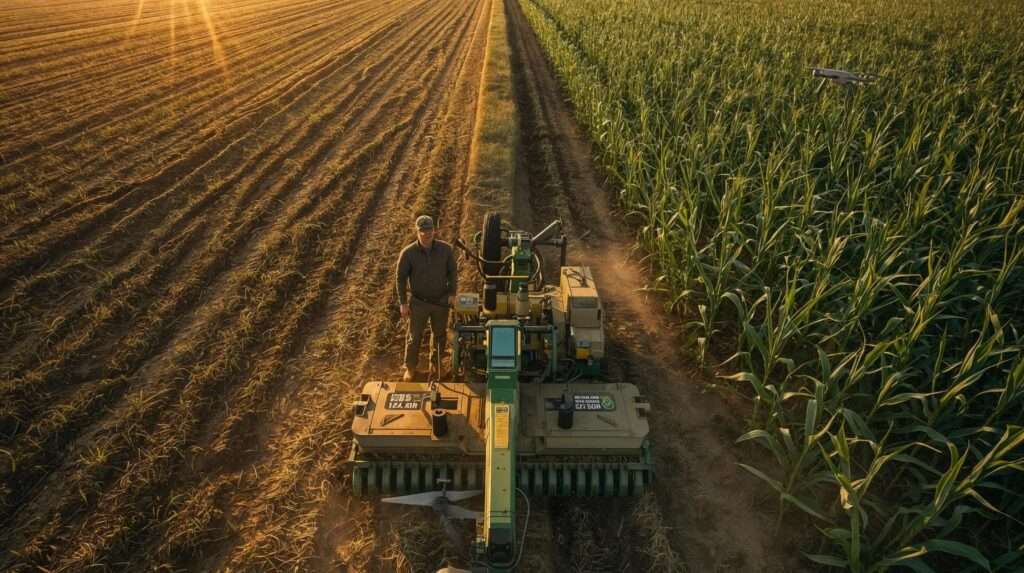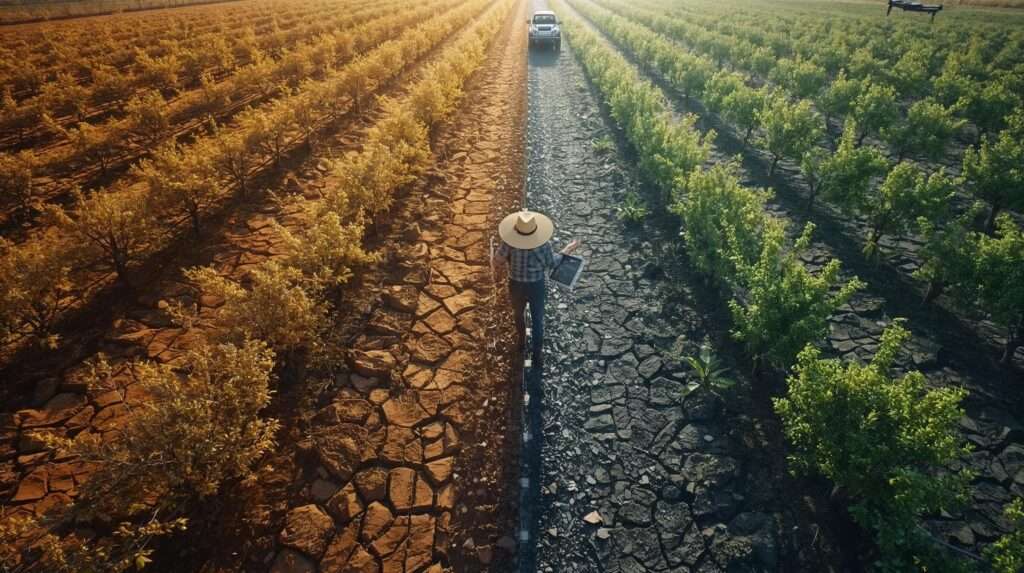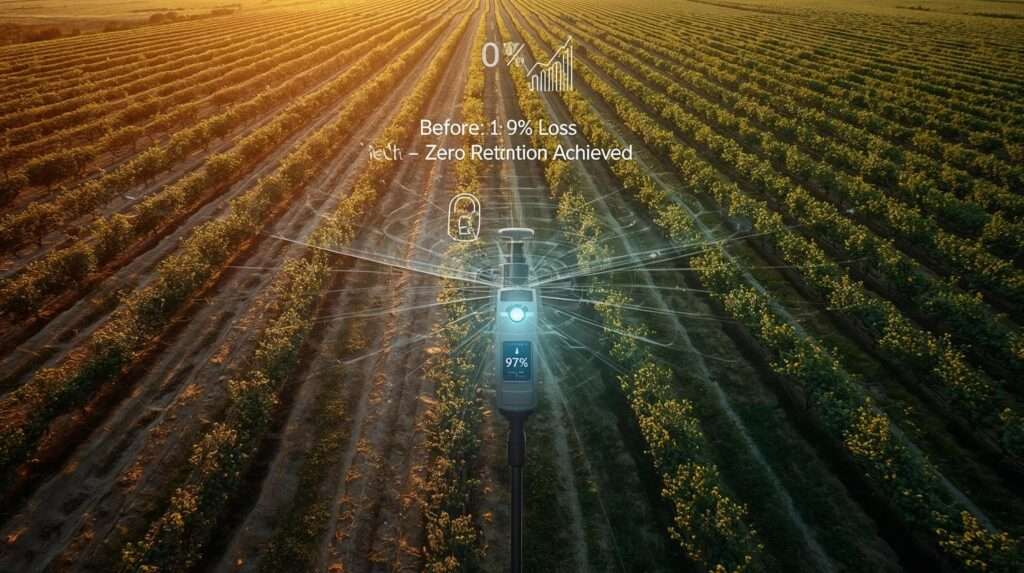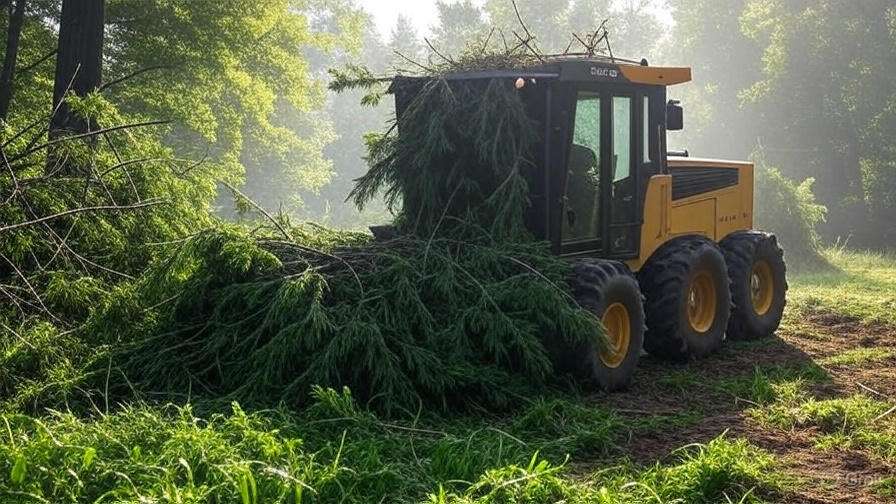
Top Tips for Choosing the Best Forestry Mulcher Rental: Save Time and Money on Your Land Clearing Projects
Land clearing projects can be daunting. Whether you’re clearing brush, trees, or overgrown vegetation, the right equipment can make or break your efficiency—and your budget. That’s where a forestry mulcher rental comes in. Renting the right mulcher is a game-changer, allowing you to tackle big projects without the hefty price tag of purchasing equipment. But with so many options out there, how do you ensure you’re choosing the best mulcher for your specific needs?
In this article, we’ll guide you through the top tips for selecting the right forestry mulcher rental, helping you save both time and money. From understanding machine specs to comparing rental services, you’ll get the insider knowledge you need to make a confident, informed decision. Ready to start your project with the right equipment? Let’s dive in and make your land clearing a breeze!
Table of Contents
Toggle1. Why You Should Consider a Forestry Mulcher Rental
When it comes to land clearing, you might be tempted to buy a forestry mulcher, but in most cases, renting is the smarter choice. Here’s why:
1.1. Cost-Effective for Short-Term Projects 
Buying a forestry mulcher is a big investment—especially if you only need it for a one-time or seasonal project. The initial cost can be steep, and that’s not including ongoing maintenance, storage, and repairs. Renting allows you to access top-tier mulching equipment without the hefty price tag. You pay only for the time you need it, saving your budget for other essential tasks.
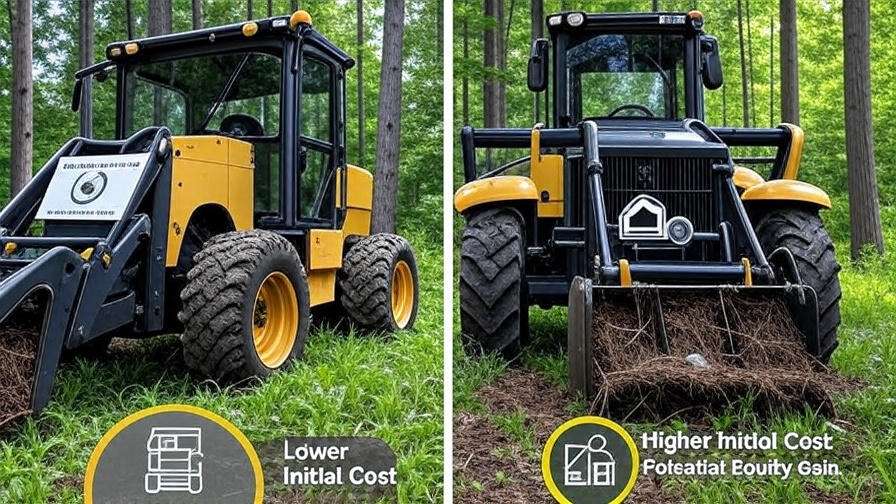
1.2. No Maintenance Hassles 
Maintaining heavy machinery can be time-consuming and costly. When you rent a forestry mulcher, the rental company handles all the maintenance. That means you don’t have to worry about breakdowns, repairs, or unexpected costs. You just pick up the mulcher, use it, and return it—simple as that!
1.3. Access to Latest Technology 
Technology in the mulching industry evolves quickly. By renting, you gain access to the latest, most efficient machines without the commitment of ownership. This means you’ll benefit from cutting-edge features like improved fuel efficiency, stronger cutting power, and better maneuverability—making your land clearing project more efficient and effective.
1.4. No Long-Term Commitment 
If you’re only clearing land for a few days or weeks, purchasing a mulcher is overkill. Renting gives you the flexibility to get the job done without being tied to a piece of machinery for the long haul. Plus, you can rent different types of mulchers for different tasks, ensuring you always have the right tool for the job.
1.5. Save on Storage Space 
Storing heavy machinery requires space and, often, special care. When you rent a forestry mulcher, you don’t have to worry about where to keep it when you’re not using it. No need to maintain a storage facility, pay for additional space, or deal with the hassle of storing a bulky piece of equipment on your property.
By choosing a forestry mulcher rental, you’re making a practical decision that saves both money and time. It’s an efficient way to complete your land clearing projects without the stress of ownership. Ready to find the best rental for your needs? Let’s dive deeper into how to choose the right mulcher for your job!
2. Key Factors to Consider When Renting a Forestry Mulcher
Renting the right forestry mulcher can make or break your land clearing project. To ensure you’re getting the best value and efficiency, here are the key factors you should consider before making your rental decision:
2.1. Size and Power Requirements 
Not all mulchers are created equal. Depending on the size of your project and the type of vegetation you need to clear, you’ll need to select the right size and power level. Larger, more powerful machines can tackle dense forests and large trees, while smaller models are great for lighter brush and smaller jobs.
- Tip: If you’re clearing dense, tough vegetation, opt for a high-horsepower mulcher. If it’s just overgrown brush, a smaller, less powerful mulcher will do the job just fine.
2.2. Terrain and Location 
Different mulchers are suited for different terrains. If you’re working on hilly or rocky ground, make sure the mulcher you rent can handle it. Track mulchers are ideal for uneven ground, as they offer better traction, while skid steer mulchers are more suited for flat, stable surfaces.
- Tip: For tough, rocky, or sloped terrain, choose a mulcher with tracks for added stability and maneuverability.
2.3. Rental Terms and Conditions 
Before you commit to a rental, carefully review the rental terms. Look for hidden fees or restrictions like limited hours of use, fuel charges, or damage policies. Ensure the rental company includes delivery, pickup, and maintenance support if needed.
- Tip: Ask about any additional costs upfront (e.g., fuel, insurance, delivery fees) to avoid surprises later on.
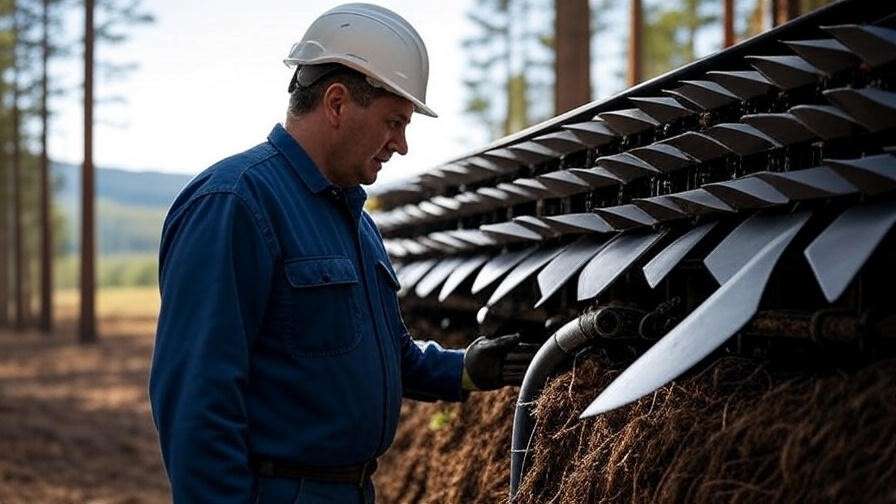
2.4. Rental Duration 
The length of time you need the mulcher will directly impact the cost. Most rental companies offer daily, weekly, or monthly rates. For shorter projects, a daily rental might be the most cost-effective option, while longer-term projects may benefit from a weekly or monthly rental.
- Tip: Plan your rental duration carefully. If you’re uncertain about how long the project will take, opt for a flexible rental agreement that lets you extend if necessary.
2.5. Available Accessories and Attachments 
Some forestry mulchers come with attachments that can make your job easier, such as tree shears, grapples, or rakes. These accessories can increase efficiency, especially if you have specific tasks (e.g., handling large logs or clearing debris).
- Tip: Check with your rental provider to see what additional attachments are available. Renting the right accessories can save you time and effort.
Considering these key factors will help you rent the right forestry mulcher that suits your specific project needs. A little research now can save you a lot of time, money, and frustration later. Ready to move on to choosing the best rental company? Let’s go!
3.How to Choose the Right Forestry Mulcher Rental Company
Selecting the right forestry mulcher rental company is just as important as choosing the right machine. The company you rent from can affect the overall experience, cost, and success of your project. Here’s what you need to look for:
3.1. Reputation and Reviews 
The best way to gauge the quality of a rental company is through customer reviews and testimonials. A company with positive feedback is likely to offer reliable equipment and good service. Check online reviews on platforms like Google, Yelp, or even social media. Word of mouth from fellow landowners or contractors is also a great resource.
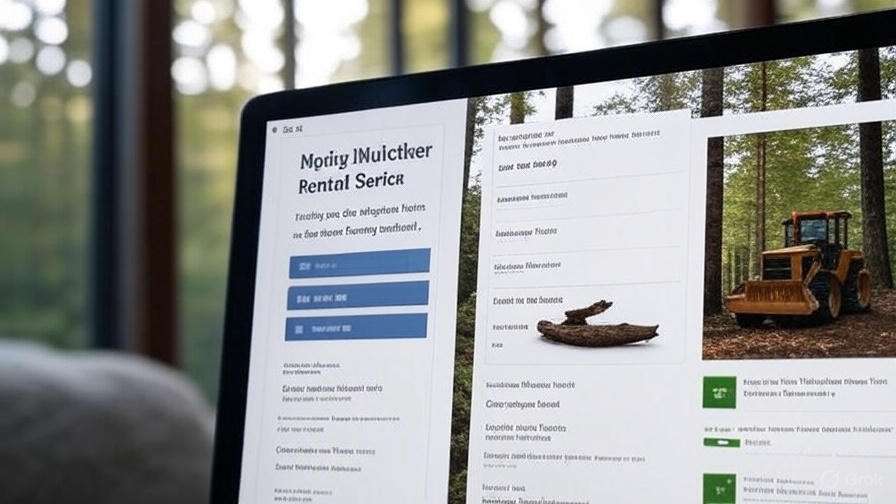
- Tip: Look for reviews that specifically mention the company’s customer service, equipment quality, and responsiveness.
3.2. Customer Support and Availability 
When renting heavy equipment like a forestry mulcher, having reliable support is crucial. You want a company that is easy to reach and provides quick solutions if you encounter issues with the machine. Ensure they offer 24/7 emergency support or at least have a clear procedure for addressing problems during your rental period.
- Tip: Choose a company that offers training or a brief orientation on how to operate the mulcher safely. Some companies even offer on-site assistance if needed.
3.3. Equipment Quality and Maintenance 
Ensure that the rental company maintains its equipment in top condition. Well-maintained mulchers perform better, are safer to operate, and are less likely to break down. Ask the company about their maintenance procedures and how frequently they service their equipment.
- Tip: Inspect the mulcher before signing the rental agreement. Look for signs of wear or neglect, especially around critical areas like the blades and hydraulics.
3.4. Rental Flexibility and Terms 
Look for a company that offers flexible rental terms, especially if your project timeline might change. Some companies allow you to extend the rental period without hassle, while others may charge hefty penalties for late returns. Also, inquire about delivery and pickup options—having the equipment brought to your site saves you time and effort.
- Tip: Compare rental agreements from different companies to find the most flexible terms and avoid surprise charges.
3.5. Local vs. National Providers 
While national rental companies might have a larger fleet of equipment, local rental companies often provide more personalized service and flexible terms. Local businesses may also have a better understanding of the specific needs and terrain in your area.
- Tip: If you choose a national provider, ensure they have a branch close to your project site for convenience and easier equipment servicing.
Choosing the right forestry mulcher rental company can significantly improve the efficiency of your land clearing project. By focusing on reputation, customer service, and equipment quality, you can find a provider that meets your needs and helps you get the job done right. Ready to find your perfect mulcher? Let’s move on!
4. Understanding Forestry Mulcher Specifications
When renting a forestry mulcher, it’s essential to understand the key specifications of the equipment. These specs will help you choose the right machine for your land clearing project and ensure the job gets done efficiently and safely. Let’s break down the important features you should consider:
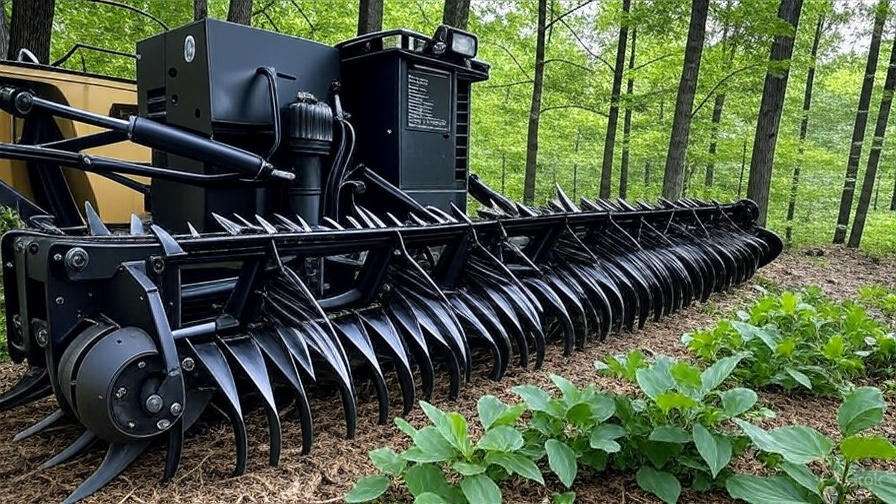
4.1. Mulcher Size and Cutting Width 
The size of the mulcher and its cutting width play a big role in determining how quickly and effectively it can handle your project. Larger machines with wider cutting widths are better suited for clearing large areas quickly, while smaller machines are more agile for tight spaces or lighter brush.
- Tip: For large, open areas, choose a mulcher with a wider cutting width (over 60 inches). For smaller, more detailed work, a narrower width (40-50 inches) will be more maneuverable.
4.2. Horsepower and Power Requirements 
The horsepower (HP) of a forestry mulcher determines how much power it has to tackle tough vegetation, including trees, thick brush, and dense undergrowth. A higher horsepower machine will be able to handle bigger, tougher tasks, while a lower horsepower mulcher is more suitable for lighter vegetation.
- Tip: If your project involves heavy-duty clearing, go for a mulcher with at least 100-150 HP. For lighter tasks, 60-80 HP should suffice.
4.3. Blade Type and Cutting Performance 
The type of blades your mulcher uses affects its cutting performance. Some mulchers come with fixed blades, while others have swinging or flail-style blades. Fixed blades are great for large, hard-to-cut material, while swinging blades are more versatile for smaller vegetation.
- Tip: If you’re clearing a mix of small and large debris, choose a mulcher with adjustable blades or a combination of blade types for flexibility.
4.4. Hydraulic Power and Speed 
Hydraulic power is crucial for operating the mulcher’s mechanisms, including the cutting head. A higher hydraulic flow rate means faster and more efficient mulching. Also, consider the speed at which the mulcher operates, as faster mulchers can clear large areas in less time, saving you money and labor costs.
- Tip: Look for mulchers with a high-flow hydraulic system if you need high productivity, but ensure the system matches the power requirements of your project.
4.5. Maneuverability and Tracks vs. Tires 
Maneuverability is important, especially if you’re working on uneven or sloped terrain. Mulchers with tracks tend to perform better in rough conditions, as they provide more stability and traction. On the other hand, mulchers with tires are more suited for flat, stable ground.
- Tip: If you’re working in hilly, rocky, or muddy conditions, a tracked mulcher will offer better performance. For flat, even terrain, tire-based mulchers are faster and more economical.
Understanding these key forestry mulcher specifications will help you choose the right machine for your project. By matching the mulcher’s features to your specific needs—whether it’s power, cutting width, or terrain—you’re setting yourself up for a successful, efficient land clearing job.
5. How to Get the Best Deal on Your Forestry Mulcher Rental
Getting a great deal on a forestry mulcher rental isn’t just about finding the lowest price—it’s about ensuring you’re getting value for your money. Here’s how you can secure the best deal while avoiding unnecessary costs:
5.1. Compare Rental Rates from Multiple Providers 
Just like any other service, rental prices can vary between companies. It’s essential to shop around and compare rates from different providers. Look at both local and national companies, and always ask about any hidden fees like delivery charges, fuel surcharges, or extra insurance costs.
- Tip: Don’t just look at the daily rental price—factor in any additional costs, such as delivery, fuel, and optional equipment.
5.2. Check for Discounts or Special Offers 
Many rental companies offer seasonal promotions or discounts for long-term rentals. If you know your project will take a few weeks or longer, ask about special pricing for extended rentals. Some companies may even offer package deals, where you can rent multiple pieces of equipment for a lower combined rate.
- Tip: Inquire about discounts for early booking or multi-equipment rentals. It could save you a significant amount over time.
5.3. Rent for Longer Periods to Save on Daily Rates 
Most rental companies charge lower daily rates for weekly or monthly rentals. If your project is expected to take several days or weeks, consider extending the rental period to get a better deal. However, be careful not to rent for longer than necessary—only commit to what you need.
- Tip: If you’re uncertain how long the job will take, rent on a weekly basis. Most companies offer flexibility in case you need to extend the rental.
5.4. Ask About Package Deals or Bundling 
If you need additional equipment like trailers or skid steers to move the mulcher around, renting them together can often result in a better overall deal. Many rental companies offer discounts when you bundle equipment, so it’s worth asking.
- Tip: Rent accessories such as tree shears, grapples, or rakes at the same time as your mulcher to get the best deal.
5.5. Be Mindful of the Fuel and Maintenance Costs 
While it’s easy to focus on the upfront cost of the rental, don’t forget to consider fuel and maintenance. Some rental companies may offer equipment with full tanks, while others might require you to return it full. Also, check whether they charge for maintenance or repairs during your rental period.
- Tip: Make sure you understand the company’s fuel policy and how maintenance is handled. Ask if they provide a full tank of fuel, and if not, ensure you know where to refuel.
By following these tips, you can ensure you’re not only getting a forestry mulcher rental at a great price but also maximizing the value of your rental. With a little research and planning, you can save money while making sure you have the right equipment to get the job done efficiently. Happy renting!
6. Proper Usage Tips for Forestry Mulcher Rentals
Renting a forestry mulcher is an excellent way to get the job done without the commitment of ownership. But to make the most of your rental, it’s important to use the equipment correctly. Here are some practical tips to ensure you’re operating the mulcher safely and efficiently:
6.1. Always Prioritize Safety 
Before using the forestry mulcher, make sure you’re wearing the necessary personal protective equipment (PPE). This includes:
- A hard hat
- Eye protection
- Hearing protection
- Gloves
- Sturdy boots
Safety should always come first, so don’t skip this step. Ensure the machine is in good condition before starting, and review the safety manual provided by the rental company if available.
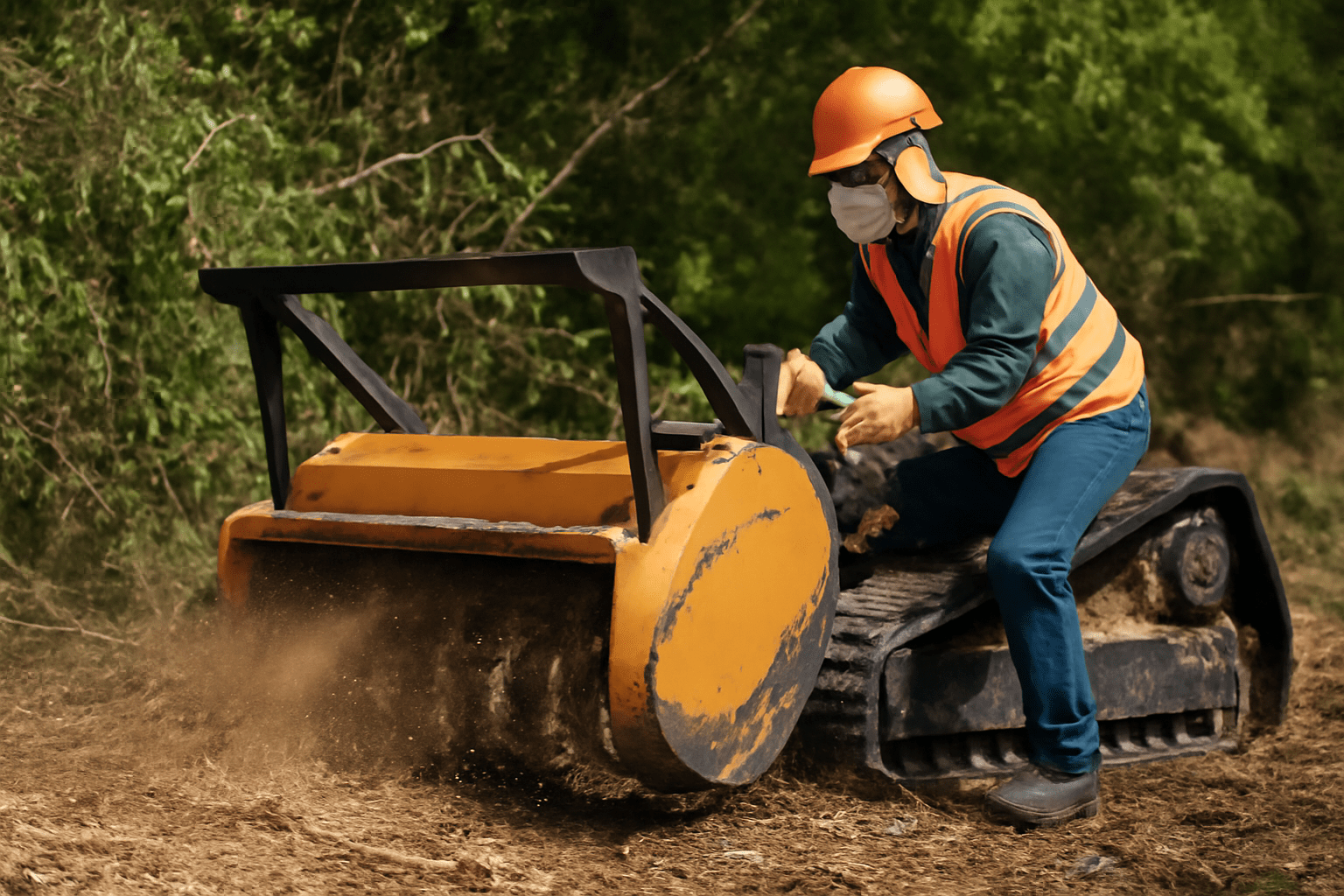
6.2. Know Your Mulcher’s Limits 
Each forestry mulcher has its power limits and capabilities. Don’t push the machine beyond its capacity, as this can lead to breakdowns or reduced efficiency. Start with smaller vegetation and work your way up to heavier materials as you get comfortable with the equipment.
- Tip: If the mulcher starts struggling or bogging down, reduce the workload or switch to a machine with more horsepower for tougher jobs.
6.3. Work in a Controlled Manner 
Move the mulcher in a steady, controlled manner to avoid unnecessary wear and tear on the equipment. Don’t rush through your tasks—take your time to ensure the mulcher is cutting efficiently and consistently. Speed can sometimes reduce the quality of the work and increase the likelihood of accidents.
- Tip: Keep the machine moving slowly and steadily. Try to avoid turning too sharply or making sudden movements that could damage the equipment.
6.4. Maintain the Mulcher Regularly During Use 
Regular checks can prevent malfunctions and increase the mulcher’s lifespan. While the rental company will typically handle major maintenance, you should perform basic checks before and during use:
- Ensure the blades are sharp and free of debris.
- Check hydraulic fluid levels.
- Inspect belts and hoses for wear.
- Tip: Take a few minutes every couple of hours to inspect the machine. This can prevent costly issues and ensure smooth operation.
6.5. Manage Fuel Efficiently 
Fuel costs can add up quickly, especially for large-scale projects. Be mindful of how much fuel you’re using. Always try to work efficiently by clearing in straight, continuous lines, which reduces the time the mulcher spends idling or shifting positions.
- Tip: Keep an eye on fuel consumption and refuel when necessary. It’s often cheaper to refill during breaks than to run the mulcher to empty.
6.6. Understand the Terrain You’re Working On 
Different types of terrain require different mulching approaches. If you’re working on uneven, rocky, or hilly ground, make sure you’re using a machine suited for that environment (tracked mulchers work best for rough terrain). Always be mindful of obstacles like large rocks or tree stumps that could damage the mulcher.
- Tip: Avoid cutting on excessively rocky ground if possible. It can dull the blades and strain the machine.
By following these usage tips, you’ll ensure that your forestry mulcher rental works efficiently, stays in good condition, and helps you get your land clearing project done quickly and safely. Proper usage not only protects the equipment but also keeps your costs down. Ready to get started? Let’s go!
7.Common Mistakes to Avoid When Renting a Forestry Mulcher
Renting a forestry mulcher can be an easy and cost-effective way to clear land, but there are a few common mistakes that could turn your project into a headache. By being aware of these pitfalls, you can avoid unnecessary delays, costs, and frustrations. Here’s what to watch out for:
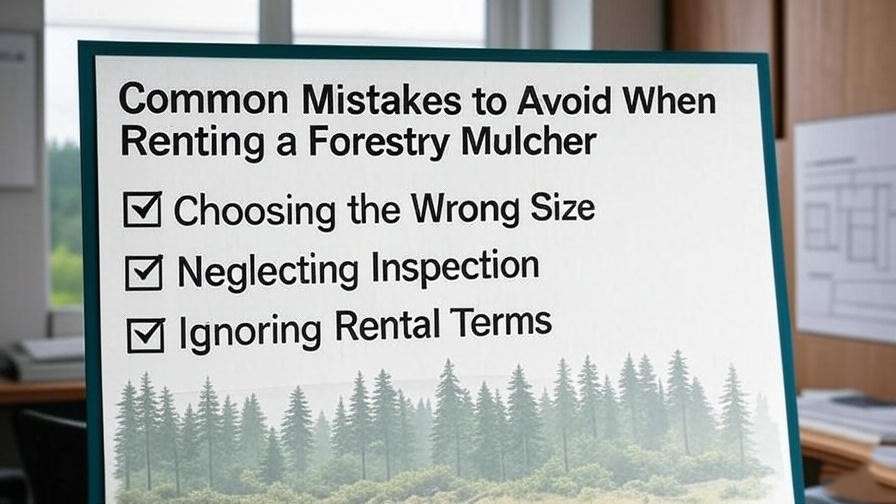
7.1. Renting the Wrong Size Mulcher 
One of the biggest mistakes people make is renting a mulcher that’s either too small or too large for the job. A mulcher that’s too small won’t be able to handle the material efficiently, while one that’s too big can be difficult to maneuver and cause unnecessary wear on the machine.
- Tip: Assess the size of your land clearing project and the type of vegetation you need to clear before renting. Choose a mulcher that fits your specific needs—don’t go for the biggest or smallest option without considering the task.
7.2. Not Inspecting the Equipment Before Renting 
You wouldn’t rent a car without checking its condition, so don’t make the mistake of renting a forestry mulcher without inspecting it first. Look for signs of wear, such as dull blades, hydraulic leaks, or damaged tracks. If the mulcher is in poor condition, it could slow down your work or even break down during the job.
- Tip: Always do a thorough inspection of the mulcher before signing the rental agreement. Test the equipment to ensure everything is in working order.
7.3. Ignoring Rental Terms and Conditions 
Many renters skip reading the fine print when it comes to rental terms, which can lead to unexpected fees or penalties. Check the fine print for hidden costs like late fees, fuel surcharges, and maintenance responsibilities. Also, understand the rental duration and extension policies in case you need more time.
- Tip: Take time to carefully read through the rental agreement. Ask questions about anything you don’t fully understand, and make sure you’re aware of all costs before committing.
7.4. Underestimating the Terrain 
Another common mistake is not fully considering the terrain you’ll be working on. If you’re clearing land with uneven ground, rocks, or hills, certain mulchers will perform much better than others. Track mulchers, for example, are ideal for rough, rocky terrain, while wheeled mulchers are better for flatter, more stable surfaces.
- Tip: Always consider the conditions of the land before renting. Be honest about the terrain to ensure you choose a mulcher that can handle it efficiently.
7.5. Forgetting to Account for Fuel and Maintenance 

Some renters forget to account for the fuel costs and basic maintenance required during their rental period. Mulchers can use a lot of fuel, and if you don’t keep an eye on fuel levels or check for debris buildup, your productivity could suffer.
- Tip: Ask the rental company about fuel policies and maintenance requirements. Keep track of fuel usage during the project to avoid interruptions, and perform basic checks on the mulcher while in use.
7.6. Not Asking About Additional Equipment or Attachments 
Sometimes, a forestry mulcher rental alone isn’t enough for your job. You might need additional equipment or attachments like trailers for transporting the mulcher or tree shears for easier cutting. Forgetting to ask about these extras can lead to unexpected costs or delays.
- Tip: Always ask the rental company about available attachments and whether they can be rented alongside the mulcher. Bundling equipment can often save you money and streamline your work.
By avoiding these common mistakes, you’ll ensure a smoother rental experience and more efficient land clearing project. Taking the time to assess your needs, inspect the equipment, and understand the terms will help you avoid unnecessary costs and setbacks. Ready to get started with your rental? Let’s make it a success!
Conclusion:
Renting a forestry mulcher is an excellent way to take on land clearing projects without the high costs and commitments of purchasing expensive equipment. By choosing the right machine, understanding the specifications, and avoiding common mistakes, you can ensure your project runs smoothly, on time, and within budget.
To recap, when renting a forestry mulcher, be sure to:
- Consider the size and power needed for your project.
- Choose a reputable rental company with good customer service.
- Understand the specifications and features that are most important for your terrain and task.
- Look for the best deals by comparing rates and checking for discounts or bundle offers.
- Follow proper usage and maintenance tips to keep the equipment in top shape.
With careful planning and the right rental partner, you can save both time and money while getting the job done efficiently and safely. Whether you’re clearing brush, trees, or overgrown land, the right forestry mulcher rental can make all the difference.
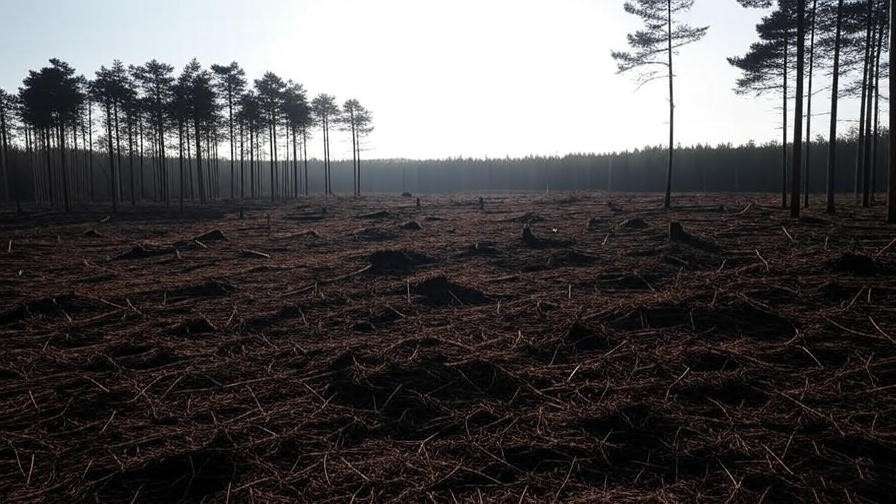
Ready to tackle your land clearing project? Start by renting the perfect mulcher for your needs and get to work!
Frequently Asked Questions (FAQs)
1. How much does it cost to rent a forestry mulcher? 💸
The cost of renting a forestry mulcher depends on the type, size, and rental duration. On average, daily rentals can range from $200 to $500 per day, while weekly rates may go from $1,000 to $2,000. Always ask for a detailed quote, including extra charges like delivery, fuel, and insurance, to avoid hidden fees.
2. Can I rent a forestry mulcher for a one-day project? ⏳
Yes, many rental companies offer flexible rental terms, including one-day rentals. However, keep in mind that daily rates are usually higher than weekly or monthly rentals. If you’re unsure how long you’ll need the mulcher, consider a daily rental with an option to extend if necessary.
3. Do I need a special license to operate a forestry mulcher? 🎓
Typically, you don’t need a special license to operate a forestry mulcher, but you should have experience using heavy machinery. Some rental companies may require you to sign a waiver confirming your knowledge of safe operation. It’s always a good idea to ask for a brief orientation if you’re new to the equipment.
4. How do I choose the right size forestry mulcher? 🌿
The right size mulcher depends on the scale and type of vegetation you’re clearing. For small to medium tasks, a smaller mulcher (50-80 inches cutting width) may suffice. Larger projects with dense brush or trees require more power and a wider cutting width (over 60 inches). Consult with the rental company for advice based on your project needs.
5. What if the forestry mulcher breaks down during the rental period? 🛠️
Most reputable rental companies offer support if the equipment breaks down. Before renting, check if they provide maintenance services or emergency assistance. Always inspect the machine before use and ensure you know how to contact the rental company for quick resolution.
6. How do I transport a forestry mulcher to my job site? 🚚
Many rental companies offer delivery and pickup services for an additional fee. If you plan to transport the mulcher yourself, ensure you have the proper trailer and equipment to safely move it. Make sure your vehicle can handle the mulcher’s weight and size.
7. Are there any hidden fees when renting a forestry mulcher? 💡
Hidden fees can include charges for fuel, insurance, delivery/pickup, and overage fees if you exceed the rental period. Always ask the rental company for a breakdown of all costs upfront. Also, check the rental agreement for clauses regarding damages or extra hours of usage.
8. How do I maintain a forestry mulcher during the rental period? 🔧
Regular maintenance during the rental period involves simple tasks like checking the fuel, inspecting the blades, and ensuring the machine is free of debris. Some companies include maintenance in the rental price, but it’s always a good idea to ask. Keep the mulcher in good condition to avoid fines or additional charges.
















